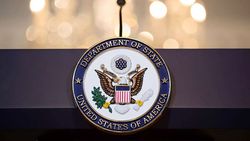
OP-ED: Understanding the Bangabandhu murder trial
Putting the case into legal, political, and historical context
The assassination of the Father of the Nation Bangabandhu Sheikh Mujibur Rahman marked one of the darkest and most trying moments in the history of Bangladesh. The protracted legal process that began 21 years after the August 15, 1975 carnage is a momentous one that every enthusiast of history would like to be acquainted with. This article is set to discuss, in a chronological manner, the legal and political background of the case, proceedings at both trial court and appellate court, and the fate of the suspected perpetrators.
Political background to the case
On August 15, 1975, some unruly Bangladesh Army officials, in a pre-dawn putsch, assassinated Sheikh Mujibur Rahman and 16 other members of his family. Khondaker Mostaq Ahmad, who later grabbed the office of the president and was then the commerce minister, seemed to have been acting discreetly and as a spy in Sheikh Mujibur’s government.
The assassination of the Father of the Nation and dethroning the post-independence Awami League government was indeed a complex political plan that even included countries like the US and Pakistan. This shows that bringing the fugitive perpetrators of the assassination to justice would require cooperation between the involved jurisdictions.












